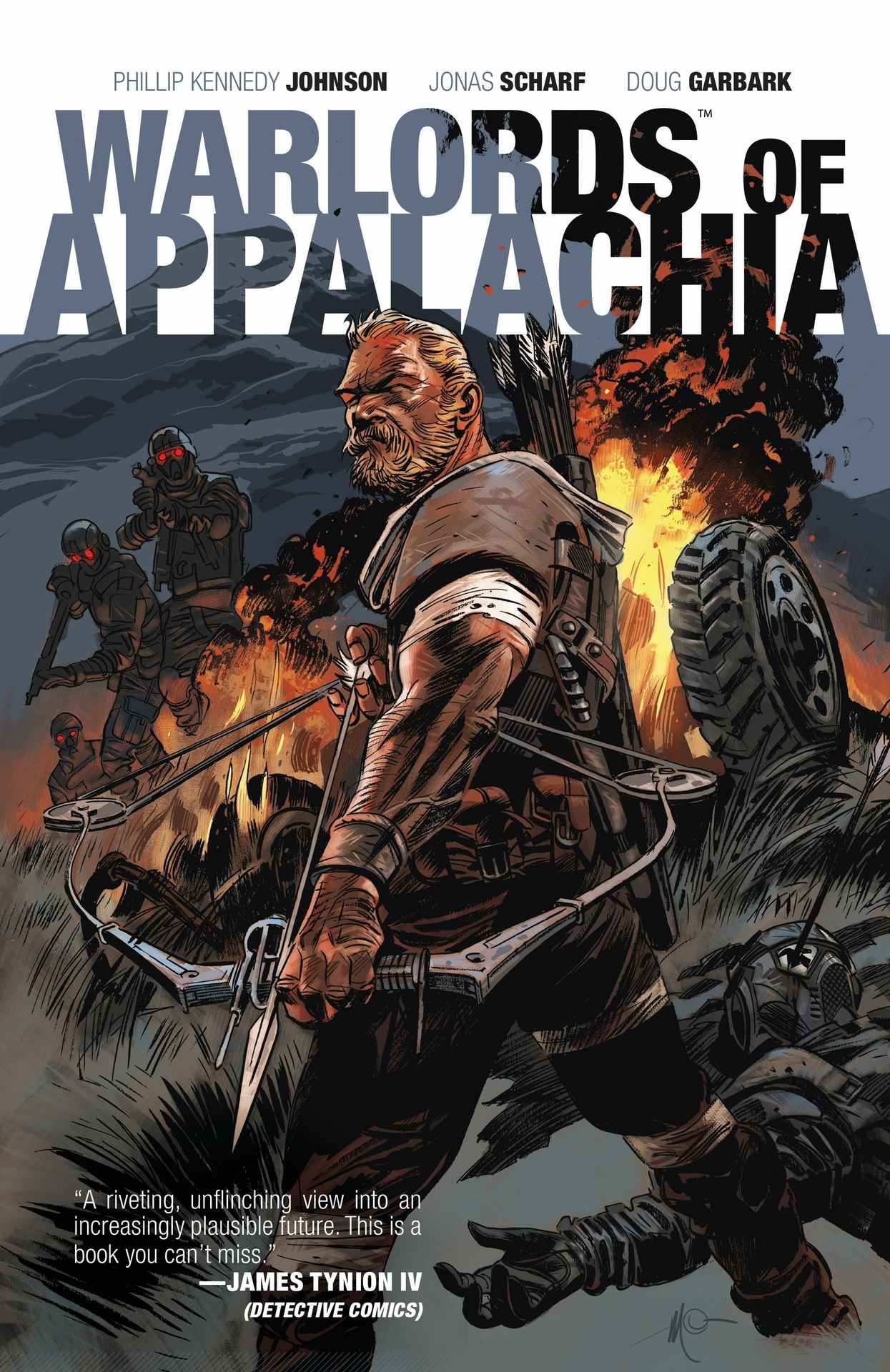I started writing comics a few years ago, and since then have attended a decent number of conventions. If you’re a comic creator, conventions are part of the gig. That’s where the pros are, that’s where the fans are, that’s where you network and get the word out. It’s the best way to stay current in the comics industry: see what the new books are, see who the new talent is, find artists for upcoming projects, talk to publishers and editors, maybe attend some interesting panels.
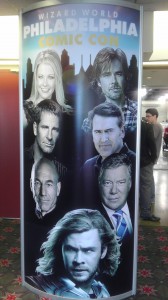 Philly Con’s never been my favorite, frankly. Philly Con caters more to the demographic than the professionals. The biggest publishers (DC, Marvel, Image, Dark Horse, etc.) don’t have booths here at all. But if you want your Blu-Ray box set of the Evil Dead series signed by Bruce Campbell, or you want to sit in the Delorian from Back to the Future, or you want your life-size cut-out of Spike from Buffy the Vampire Slayer signed, or you just want to get some use out of the Sith armor you had made special, you’re in the right place. You’ll find your favorite WWE wrestlers here. Scott Bakula. Peter Mayhew, of Chewbacca fame. The cheerleader from Heroes. One of the guys who got eaten on The Walking Dead. On and on.
Philly Con’s never been my favorite, frankly. Philly Con caters more to the demographic than the professionals. The biggest publishers (DC, Marvel, Image, Dark Horse, etc.) don’t have booths here at all. But if you want your Blu-Ray box set of the Evil Dead series signed by Bruce Campbell, or you want to sit in the Delorian from Back to the Future, or you want your life-size cut-out of Spike from Buffy the Vampire Slayer signed, or you just want to get some use out of the Sith armor you had made special, you’re in the right place. You’ll find your favorite WWE wrestlers here. Scott Bakula. Peter Mayhew, of Chewbacca fame. The cheerleader from Heroes. One of the guys who got eaten on The Walking Dead. On and on.
Even with the skewed focus of the Philly Con, though, it’s still a worthwhile endeavor for me. The real value of these conventions is in “Artist Alley.”
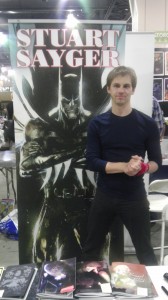 My first few hours here, I did a lap through the comic vendors, bought a few hard-to-find t-shirts as gifts, and have spent the rest of the convention trolling Artist Alley. Set apart from the store exhibits and signing booths, Artist Alley is the part of the convention floor where all the artists work and display/sell their wares. The other stuff is fun, and I love supporting the bookstores especially, but the artists are what matter.
My first few hours here, I did a lap through the comic vendors, bought a few hard-to-find t-shirts as gifts, and have spent the rest of the convention trolling Artist Alley. Set apart from the store exhibits and signing booths, Artist Alley is the part of the convention floor where all the artists work and display/sell their wares. The other stuff is fun, and I love supporting the bookstores especially, but the artists are what matter.
Once I hit Artist Alley, I saw two friends almost right away: Stuart Sayger and Aaron Kuder, both obscenely talented artists. I’ve approached both of them at different times in the past few years about doing a book, and although it never worked out, we stayed in touch. Since we last met, Stuart was approached by DC to do concept art for the upcoming Superman: Man of Steel film. Aaron has been getting steady work with Marvel, lately penciling the critically-acclaimed Avenging Spider-Man. It’s terrific to see these guys find such great success in such a competitive field. Partly because they deserve it, and partly because it makes me feel smarter.
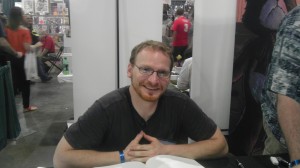 The downside to that success, of course: They’re busy. So the quest continues. I looked at every artist, book, print and pin-up in Artist Alley today. I met some great people, some talented artists, and a few that I’d love to work with. (More to follow soon, hopefully.) I also met two filmmakers who piqued my interest.
The downside to that success, of course: They’re busy. So the quest continues. I looked at every artist, book, print and pin-up in Artist Alley today. I met some great people, some talented artists, and a few that I’d love to work with. (More to follow soon, hopefully.) I also met two filmmakers who piqued my interest.
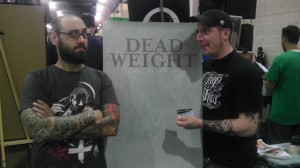 As I write this, I’m watching an independent film called Dead Weight. Today, I met Adam Bartlett and John Pata, the co-writers/co-directors of the movie, which they’re promoting and selling at the convention. Staunchly proud of their hometown of Oshkosh, Wisconsin, these guys got volunteer support from tons of people in the community and people who believed in their project. They put together a cast and crew almost entirely from people they knew. They figured out what to do by (seriously) reading books on producing films and looking stuff up on Google. And then they made a feature-length movie. Big deal, you might think. People make shoestring movies all the time, using an iPhone or their mom’s camcorder. My computer’s got movie software on it. Anybody can do it.
As I write this, I’m watching an independent film called Dead Weight. Today, I met Adam Bartlett and John Pata, the co-writers/co-directors of the movie, which they’re promoting and selling at the convention. Staunchly proud of their hometown of Oshkosh, Wisconsin, these guys got volunteer support from tons of people in the community and people who believed in their project. They put together a cast and crew almost entirely from people they knew. They figured out what to do by (seriously) reading books on producing films and looking stuff up on Google. And then they made a feature-length movie. Big deal, you might think. People make shoestring movies all the time, using an iPhone or their mom’s camcorder. My computer’s got movie software on it. Anybody can do it.
That’s all true. But I’ve seen my share of low budget movies, B movies, just-for-fun movies. And as I said, I’m watching Dead Weight right now, and it’s none of those things. It’s a real film. It’s a good movie.
Adam and John fleshed out the story to Dead Weight bit-by-bit for 16 months, first jotting down fragments of ideas and gradually weaving them into a larger narrative. It’s a more understated variation on the post-apocalyptic genre that’s been so popular in Hollywood in recent years (I Am Legend, The Road, Book of Eli). There’s a real story, thoughtful camera angles, music, characters you care about. It was filmed using real gear. Even making comics is more complicated than people realize, but thinking about all the variables that go into filmmaking paralyzes me. These guys spent years of their lives on this, and they made a real movie. They’ve got my sincere admiration for finishing such a complex and high-quality project.
Tomorrow, I meet the man who taught me to read without realizing it: long-time Batman artist Neal Adams. More to follow!
